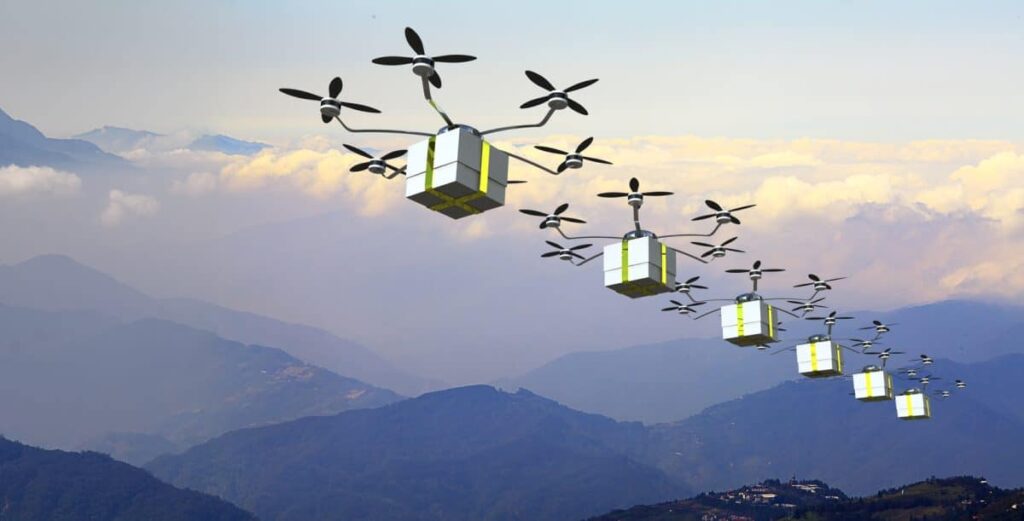[ad_1]
In recent months, we’ve covered drone-related developments in the Tohoku region in Fukushima, Miyagi, and Yamagata Prefectures. This is part of a broader push in Japan to use drones and other forms of automation in order to address labor shortages driven primarily by Japan’s aging population.
In a recent regulatory reform to the country’s Civil Aeronautics Law, the Japanese government added a new tier of drone operations allowing for autonomous flight over residential areas. Here’s why you may be seeing more delivery drones over Japanese skies soon.
Amending Laws

Previously, Japan’s Civil Aeronautics Law delineated a 3 level system for regulating drone flights. Level 1 covers flights in visual range under the control of a human operator. Most recreational drones flown by average civilians fall under this category.
Level 2 is autonomous flight in visual range of a human controller. Finally, Level 3 is autonomous flight beyond visual range over unpopulated areas. The flights in the project we covered in our article on Yamagata’s animal-tracking drones would fall either into Level 2 or 3.
Enter level 4, the new level of drone operations. The addition of this level legalizes autonomous drone operations over residential areas. It also eases the work of logistics firms whose operations have been expanding into autonomous drones.
Some firms had already begun limited drone-based deliveries under level 3 guidelines. But this is only over remote, uninhabited areas including in Hokkaido, Yamanashi, and Fukui Prefectures. The new tier will open the way for more regular airborne delivery over more urbanized locales in the rest of Japan.
“Liberating the Sky”
The government says that drone operators don’t need agreement from property owners whose land sits under drone flight paths. However, some initiatives aim to build good relations between operators and landowners.
True Bizon, a Fukuoka-based company founded in 2014, is one such company. True Bizon’s homepage explains its mission as “aiming to truly liberate the sky.” It describes its work as being the proactive building of connections between companies that operate drones and the property owners under their flight paths. It thus aims to liberate the sky and free skies worldwide for use. In practice, the company arranges payments to landowners under drone flight paths and works to secure agreements promising to compensate the landowners in case of accidents.
True Bizon is investing in more than drones. It also manages vehicles for delivery from small businesses, airborne delivery of food and medicine, and even disaster response craft of the sort we covered in our article on the Fukushima Robot Testing Field.
While it is based in Fukuoka, True Bizon’s work has extended to many municipalities in prefectures across Japan, from Fukuoka and Saga Prefectures in the west to Ibaraki Prefecture in the east. With the regulatory change on drones from the MLIT, its work is certain to only expand in the months and years ahead.
A New System
Of course, the new drone operations tier is not without its constraints and oversight.
The Ministry of Land, Infrastructure, Transport, and Tourism (MLIT) website announcing the new policy delineates three points that are part of Level 4’s implementation. It will take time for drone operators to move through these new systems and oversight operations.
The first point is the inspection of drone airframes. This is to authenticate the drones used in Level 4 operations and ensure the strength and safety of their airframes. Drones are due for inspection yearly.
Second is the certification of individual pilots’ technical skills. After study, examination of applicants’ technical knowledge, and test flights in approved facilities, the MLIT will certify prospective drone pilots.
MLIT’s final point is operational rules. Like any aviator, drone pilots must file a flight plan in advance and keep a flight log. They also must record and report accidents and incidents. These include injury to people, damage to structures, mid-air collisions involving other aircraft, and catastrophic equipment failures leading to a drone’s destruction. The Japan Transport Safety Board is the body tasked with investigating major accidents involving Level 4 drones.
Though legislators passed the reform on the 5th of December, operators have until March 2023 to complete government certification procedures. Drone pilots are obliged to renew their licenses once every three years.
So, starting this coming summer, should you be in Japan: remember to look up.
Sources
[ad_2]
Source link


